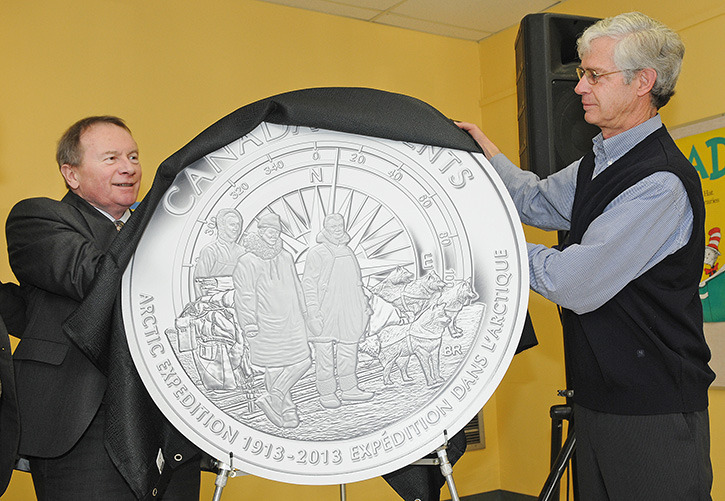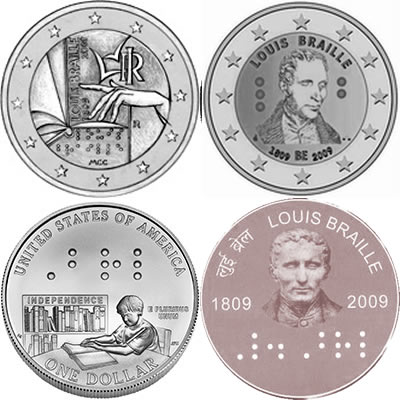Canadian Arctic Expedition

Royal Canadian Mint President Ian Bennett, at left, and Dr. David Gray, a Research Associate at the Canadian Museum of Nature in Ottawa,unveil a model of one of two new quarters at the Nellie McClung branch of the Greater Victoria Public Library on Cedar Hill Road. The quarters celebrate the 100 year anniversary of the first official Canadian Arctic expedition and life in the Canadian North. The expedition departed from Esquimalt harbour. Dr. David Gray, a Research Associate at the Canadian Museum of Nature in Ottawa, is an expert on the Arctic expedition and a native of Esquimalt.— Image Credit: Don Denton/News Staff
New coins celebrate Victoria's role in Arctic expedition
by Don Denton - Victoria News
posted Nov 22, 2013 at 12:00 PM— updated Nov 22, 2013 at 5:13 PM
The president of the Royal Canadian Mint, Ian Bennett, was on hand Friday morning to help unveil Canada's latest quarter coins at the Nellie McClung branch of the Greater Victoria Public Library.
Helping to unveil the coins were Nanaimo-Alberni MP James Lunney and David Gray, a research associate with the Canadian Museum of Nature. Twenty-five million of the 25 cent commemorative coins will begin to be distributed into circulation today.
The coins celebrate the 100th anniversary of Canada's first official Arctic expedition as well as life in the north. The expedition set out from Victoria, sailing from Esquimalt harbour. The Prime Minister at the time Sir Robert Borden sent the expedition to map the western Arctic and to study the peoples, wildlife and geology.
Gray, who was born in Esquimalt, is an expert on the 1913 expedition and has made several trips to the sites visited by the original explorers.
READ FULL ARTICLE
IMG REF
Canada - 2013 - Elizabeth II - Canadian Arctic Expedition
Canada - Twenty-Five Cents
Canada -



